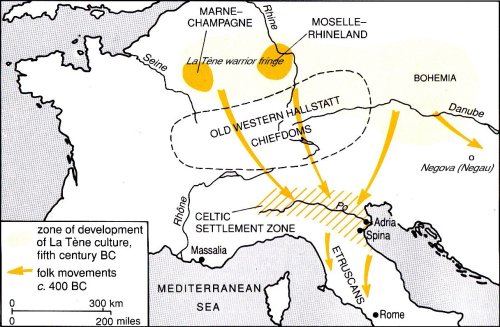ebAmerican
Regular Member
- Messages
- 226
- Reaction score
- 45
- Points
- 0
- Ethnic group
- German and Swedish
- Y-DNA haplogroup
- R1b- P312
- mtDNA haplogroup
- T2E2
"The Saami are regarded as extreme genetic outliers among European populations. In this study, a high-resolution phylogenetic analysis of Saami genetic heritage was undertaken in a comprehensive context, through use of maternally inherited mitochondrial DNA (mtDNA) and paternally inherited Y-chromosomal variation. DNA variants present in the Saami were compared with those found in Europe and Siberia, through use of both new and previously published data from 445 Saami and 17,096 western Eurasian and Siberian mtDNA samples, as well as 127 Saami and 2,840 western Eurasian and Siberian Y-chromosome samples. It was shown that the “Saami motif” variant of mtDNA haplogroup U5b is present in a large area outside Scandinavia. A detailed phylogeographic analysis of one of the predominant Saami mtDNA haplogroups, U5b1b, which also includes the lineages of the “Saami motif,” was undertaken in 31 populations. The results indicate that the origin of U5b1b, as for the other predominant Saami haplogroup, V, is most likely in western, rather than eastern, Europe. Furthermore, an additional haplogroup (H1) spread among the Saami was virtually absent in 781 Samoyed and Ob-Ugric Siberians but was present in western and central European populations. The Y-chromosomal variety in the Saami is also consistent with their European ancestry. It suggests that the large genetic separation of the Saami from other Europeans is best explained by assuming that the Saami are descendants of a narrow, distinctive subset of Europeans. In particular, no evidence of a significant directional gene flow from extant aboriginal Siberian populations into the haploid gene pools of the Saami was found."
"Soon after the beginning of the retreat of the ice sheets covering the area, in the 8th–10th millennia before present (BP), populations of hunters and fishermen, the producers of the Mesolithic Komsa and Fosna-Hensbacka cultures, inhabited the coastal region of Scandinavia, extending well into Finland and to the Kola Peninsula (Kozlowski and Bandi 1984; Nygaard 1989; Sumkin 1990). The linguistic affiliation of these pioneer settlers of the north is largely unknown, but it has been suggested that they are the descendants of the Ahrensburgian population, which migrated toward the north from western Europe, along the Atlantic coast of Norway. It has been proposed that they might have been the ancestors of the present-day Saami (e.g., Sumkin 1990). Another presumably important component in the postglacial recolonization of northern Fennoscandia came from the east, via Karelia and Finland. It has been associated with the movement of Mesolithic populations, carriers of post-Swiderian cultures, to the north. Starting in the Neolithic period, the northern population came into contact with tribes of territories lying to the south (e.g., Sumkin 1990). Thus, according to archeological data, the present-day Saami population might have been shaped in different times both by the eastern and western influences."
http://www.ncbi.nlm.nih.gov/pmc/articles/PMC1181943/
"Soon after the beginning of the retreat of the ice sheets covering the area, in the 8th–10th millennia before present (BP), populations of hunters and fishermen, the producers of the Mesolithic Komsa and Fosna-Hensbacka cultures, inhabited the coastal region of Scandinavia, extending well into Finland and to the Kola Peninsula (Kozlowski and Bandi 1984; Nygaard 1989; Sumkin 1990). The linguistic affiliation of these pioneer settlers of the north is largely unknown, but it has been suggested that they are the descendants of the Ahrensburgian population, which migrated toward the north from western Europe, along the Atlantic coast of Norway. It has been proposed that they might have been the ancestors of the present-day Saami (e.g., Sumkin 1990). Another presumably important component in the postglacial recolonization of northern Fennoscandia came from the east, via Karelia and Finland. It has been associated with the movement of Mesolithic populations, carriers of post-Swiderian cultures, to the north. Starting in the Neolithic period, the northern population came into contact with tribes of territories lying to the south (e.g., Sumkin 1990). Thus, according to archeological data, the present-day Saami population might have been shaped in different times both by the eastern and western influences."
http://www.ncbi.nlm.nih.gov/pmc/articles/PMC1181943/


